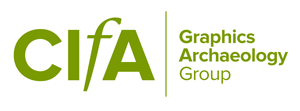How people get involved in the profession
Different people have lots of different routes into graphics and survey; however, the most common (at least in the UK) is from studying Archaeology at university, then working in commercial archaeology, and finding opportunities within their own companies to build up skills and experience. However, this is not the only way to go. Some people have different degrees and different work histories before making the switch. For example, some illustrators study illustration or graphic design initially, then get into commercial archaeology through volunteering opportunities, training programmes and/or further study.
Either way, the profession relies on a solid understanding of archaeology, and especially how commercial archaeology is done in your country. If you didn’t study archaeology initially, we recommend that you keep an eye on local volunteering websites, training courses on BAJR, or contact nearby archaeology units to see if they have any opportunities for you. You can find a list of CIfA-approved companies at this link. There are several online and distance learning courses you can complete if you feel your knowledge of the subject is weak. Even if you have already studied Archaeology, you will need field experience (so make sure you do plenty of summer digs!) and the kind of skills detailed in the pages linked to below. If you work for a unit already, but haven’t been given an opportunity to expand relevant skills, hopefully the information below will also be of use to you.
Is it right for me?
Archaeological Illustration and Survey can be very rewarding careers, as they entail making information accessible and understandable to people. We present information visually, in a way that makes it easy to digest. It can also be frustrating, as it can be difficult to find full-time posts (especially if you are not willing to move home), the level of education required is high for the relatively low salaries on offer (as with archaeology as a whole), and career progression can be difficult within small companies. It is not unusual for field staff to complete some illustrations, and survey is regularly only a part of somebody’s job on-site.
When looking into the profession, consider whether it will suit you. It is a blend of visualisation, design, mathematics, and high levels of precision. You should care about accuracy and consistency, and above all be interested in archaeology as a discipline. Most day-to-day activities won’t be as creative as some other graphic design jobs can offer; it is mostly technical. The exception to this is graphics for outreach and reconstruction illustration, but bear in mind that this type of work is likely to make up a small percentage of tasks for an illustrator, depending on where you work. You may find the BAJR Guide to a Career in Archaeology to be useful.
